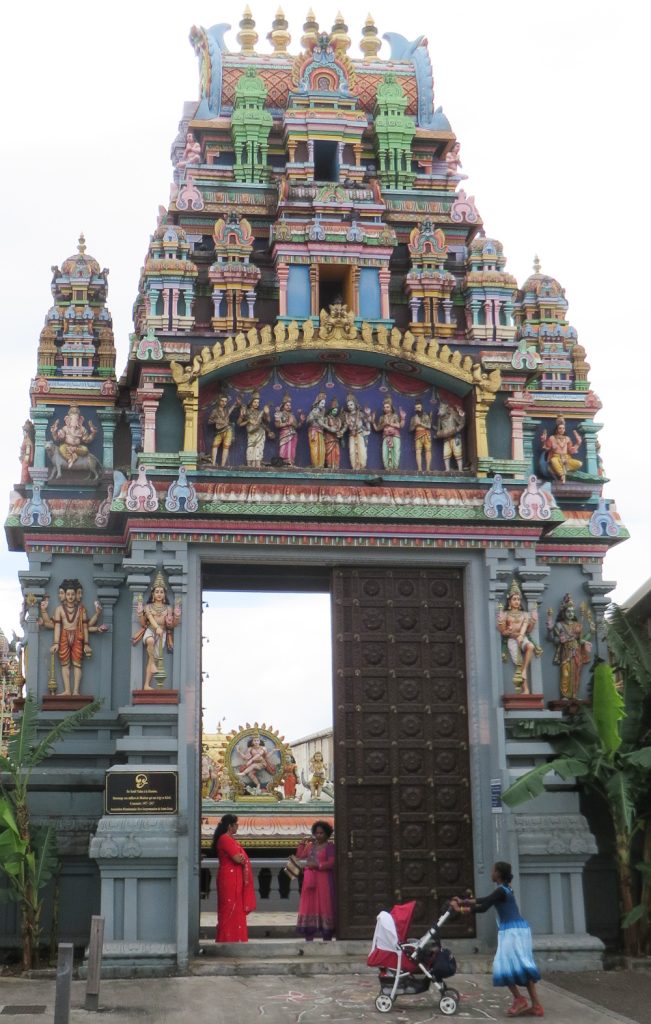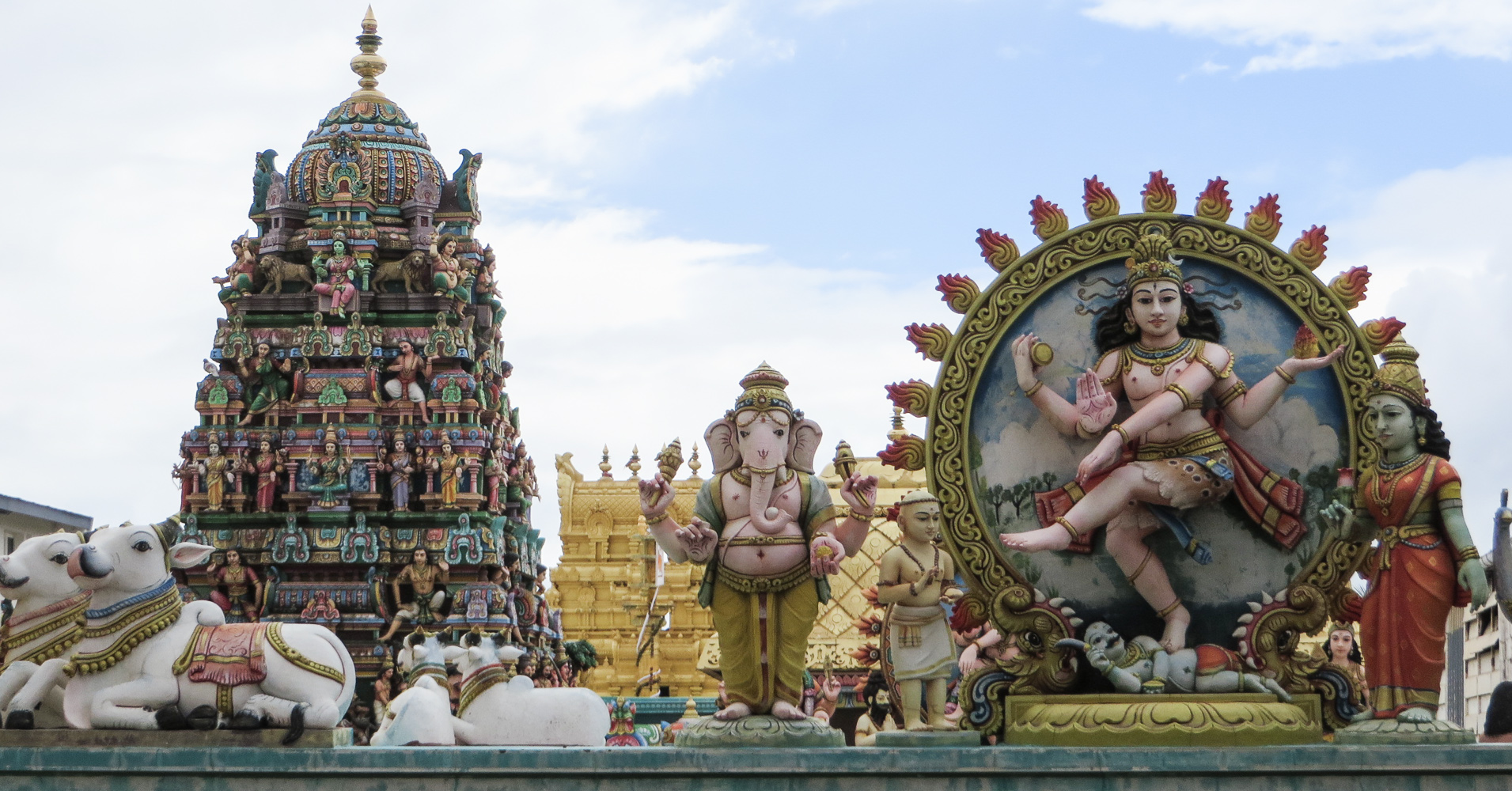Disclosure: We’re reader-supported. When you buy through links on our site, we may earn an affiliate commission at no extra cost to you. For more information, see our Disclosure page. Thanks.
Arulmigu Sri Kalikambal Kamadeswarar Temple
History of the Temple
The Kalikambal Temple, located in the bustling city of Chennai (formerly Madras), Tamil Nadu, is one of the most revered and ancient temples dedicated to Goddess Kalikambal. The temple traces its origins to the 17th century, although there are suggestions that its roots go even further back, potentially to the early medieval period. The temple’s history is intertwined with the rise of the Maratha Empire in South India, particularly during the reign of the Maratha King, Shivaji’s son, Chhatrapati Sambhaji. It is said that the temple had its early construction and renovations during his time and has witnessed several phases of expansion and modification through the years. Over time, Kalikambal Temple became a significant spiritual center for devotees of Goddess Kali, who is regarded as the fierce and protective embodiment of Shakti, the divine feminine power.
Legend holds that the temple’s idol of Goddess Kalikambal was once a part of a larger temple complex that was destroyed, and the idol itself was moved to its present location. This happened after the idol of Kalikambal was found in the nearby Kapaleeswarar Temple, which was originally dedicated to Lord Shiva. As the temple grew in prominence, successive rulers and prominent citizens took part in its renovation, contributing to its current form. The temple also has cultural significance as it is associated with the rise of Tamil culture and devotion to the goddess during the religious reforms of the Bhakti movement.
Architecture of the Temple
The architecture of Kalikambal Temple is a beautiful representation of Dravidian temple construction styles. Like most South Indian temples, it is built in a grand traditional style, with towering gopurams (gateway towers), intricately sculpted pillars, and finely detailed carvings that depict mythological stories and Hindu deities. The temple complex itself is relatively small in comparison to some of the larger temples in Tamil Nadu but carries significant architectural value due to the level of detail in its design.
The sanctum sanctorum (garbhagriha) houses the central deity, Goddess Kalikambal, an imposing idol that stands as a testament to the craftsmanship of the era in which it was created. The idol is depicted in a fierce and powerful pose, signifying her role as a protector and destroyer of evil. Surrounding the deity are smaller shrines dedicated to various other gods and goddesses, including Lord Ganesha, Lord Murugan, and Lord Shiva, among others. The temple’s walls are adorned with numerous sculptures and carvings depicting scenes from Hindu mythology, particularly those related to the goddess Kali, her iconography, and her legends.
One of the most striking features of Kalikambal Temple is the tall, ornate gopuram that greets visitors as they enter the temple complex. The gopuram is decorated with vibrant colors and detailed depictions of various deities, and its height serves as a beacon for devotees who are making their way to the temple. The architecture of Kalikambal Temple is reflective of the Dravidian style’s use of symmetry and balance, providing both a visual and spiritual experience for the devotee.

Events at the Temple
Kalikambal Temple is a hub for religious and cultural events throughout the year. The temple holds special significance during major Hindu festivals such as Navaratri, Diwali, and Tamil New Year, during which the temple witnesses an influx of devotees who come to offer their prayers and seek the blessings of the goddess. Among the most important events at the temple is the annual Navaratri festival, which is celebrated with great zeal and fervor. During this time, the temple organizes special poojas, processions, and cultural performances, bringing together the local community and pilgrims from across the region.
Another key event is the Chitra Pournami, a festival that celebrates the full moon day in the Tamil month of Chitra. This event sees a large number of devotees gather to perform rituals and seek the goddess’s blessings for prosperity and good health. In addition to these major events, the temple also holds regular rituals and poojas, such as the daily morning and evening aarti, special prayers for the well-being of the devotees, and offerings made in celebration of specific milestones such as birthdays, anniversaries, and religious milestones.
The temple also hosts several spiritual discourses, devotional music performances, and other cultural programs that are aimed at promoting the spiritual and cultural heritage of the region. These events serve as a means of not only honoring the goddess but also reinforcing the community’s connection to its cultural roots.
How to Reach
Kalikambal Temple is located in the heart of Chennai, which makes it easily accessible for both locals and tourists. The temple is situated on the famous Thambu Chetty Street, which is a central area within the city. The closest major landmark to the temple is the Chennai Fort Railway Station, which is just a short distance away.
For those traveling by air, the nearest airport is the Chennai International Airport, which is about 20 kilometers from the temple. The airport has excellent connectivity with domestic and international flights. From the airport, visitors can take a taxi or use ride-sharing apps like Ola and Uber to reach the temple directly.
For those using the train, Chennai has a well-connected railway system, and the Fort Railway Station, located in close proximity to Kalikambal Temple, is one of the main railway stations in the city. Visitors arriving at the station can easily take an auto-rickshaw or walk to the temple.
Chennai’s extensive public transport system, including buses and metro services, also provides convenient access to the temple. The Chennai Metro has a station at the Chennai Fort, which is within walking distance of the temple.
Temple Pooja/Aarti Timings
Kalikambal Temple follows a fixed schedule for poojas and aartis throughout the day, with several rituals being performed to honor the goddess. The temple opens early in the morning at around 5:00 AM for the first round of poojas. The key rituals include:
- Morning Aarti (Kumkum Pooja): 5:00 AM – 6:00 AM
- Regular Pooja and Aarti: 7:00 AM – 8:00 AM
- Afternoon Pooja: 12:00 PM – 1:00 PM
- Evening Aarti: 6:00 PM – 7:00 PM
- Night Pooja: 8:00 PM – 9:00 PM
The aartis are a significant part of the temple’s daily rituals, where the devotees chant prayers and offer flowers, incense, and other items to the goddess. The temple also conducts special poojas for devotees who wish to perform specific rituals, such as the “Kali Homam” (a special fire ritual to appease the goddess Kali).
Service – Fee Details
Kalikambal Temple offers a variety of services for devotees, including special poojas, offerings, and rituals. Some of these services require a nominal fee, while others are free of charge:
- General Pooja: Free of cost
- Special Pooja/Archanai: ₹50 to ₹500 (based on the type of offering)
- Kali Homam: ₹1,000 – ₹5,000 (depending on the type of ritual and offerings)
- Kumkum Pooja: ₹100
- Abhishekam (ritual bathing of the idol): ₹500
The temple also has various donation boxes, where devotees can contribute any amount they wish for the upkeep and renovation of the temple. The temple does not charge for entry, and all services are intended to be accessible to the community.
Contact Details
Kalikambal Temple
Thambu Chetty Street,
Chennai, Tamil Nadu,
India.
Phone: +91-44-2539-3452
Email: kalikambaltemple@chennai.in
For any inquiries related to temple events, services, or special poojas, the temple authorities can be reached at the above contact details. The temple’s staff is helpful in providing information and assistance to devotees.
Nearby Attractions
Kalikambal Temple is located in one of the most culturally rich and historically significant areas of Chennai, offering visitors the opportunity to explore several other famous attractions nearby. Some of the key nearby places include:
- Kapaleeswarar Temple: A grand and ancient temple dedicated to Lord Shiva, located in Mylapore, just a short drive away from Kalikambal Temple.
- Fort St. George: The first British fortress in India, now housing a museum with artifacts from the colonial era.
- Marina Beach: One of the longest urban beaches in India, located a few kilometers from the temple.
- Government Museum: Located in Egmore, it is the second oldest museum in India and houses a vast collection of artifacts related to Indian history, culture, and art.
Visitors to Kalikambal Temple can take a walk through the streets of Chennai and enjoy the vibrant street markets, local food, and other cultural experiences that the city has to offer.
FAQ’s and General Information about Temple
- Is the Kalikambal Temple open on holidays? Yes, the temple remains open on all days of the week, including public holidays. The temple has fixed timings for pooja and aarti throughout the year.
- Are there any dress codes for visitors? Visitors are expected to dress modestly when visiting the temple. Both men and women are advised to avoid wearing revealing or inappropriate clothing.
- Can non-Hindus visit the temple? Yes, the temple is open to all visitors, regardless of their religion. However, non-Hindus are encouraged to respect the customs and traditions of the temple.
- Is photography allowed inside the temple? Photography is allowed in the outer areas of the temple, but it is prohibited in the inner sanctum or near the deity.
- Can I perform special pooja on behalf of someone else? Yes, devotees can perform special poojas on behalf of friends, family, or loved ones by offering prayers and donations.
- Are there facilities for accommodation nearby? There are several hotels and guesthouses near the temple that cater to tourists and pilgrims, offering a range of accommodations.
- Is there parking available at the temple? Limited parking is available near the temple, and visitors are encouraged to use public transportation due to the busy nature of the area.


